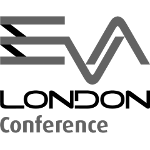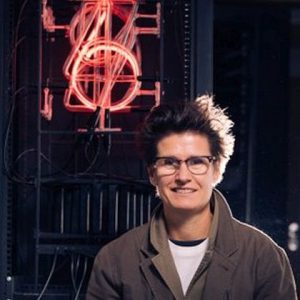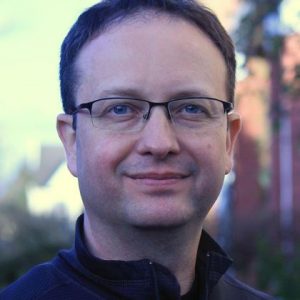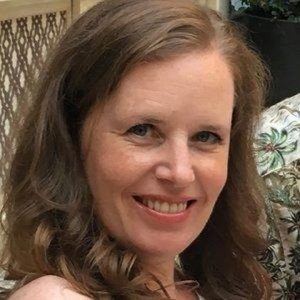EVA London Symposium
Monday, 8th July 2019
Digital Art, Culture, and Heritage: New constructs and consciousness
See also a summary paper in the EVA London 2019 conference proceedings under DOI 10.14236/ewic/EVA2019.1
Co-chairs: Jonathan P. Bowen (London South Bank University, UK) and Tula Giannini (Pratt Institute, New York, USA)
This half-day Symposium explores themes of digital art, culture, and heritage, bringing together speakers from a range of disciplines to consider technology with respect to artistic and academic practice. As we increasingly see ourselves and life through a digital lens and the world communicated on digital screens, we experience altered states of being and consciousness in ways that blur the lines between digital and physical reality, while our ways of thinking and seeing become a digital stream of consciousness that flows between place and cyberspace. We have entered the postdigital world and are living, working, and thinking with machines as our computational culture driven by artificial intelligence and machine learning embeds itself in everyday life and threads across art, culture, and heritage, juxtaposing them in the digital profusion of human creativity on the Internet.
Timetable
| 09.30 | Registration |
| 10.10 | Session 1 (chairs: Jonathan Bowen & Tula Giannini) |
| 10.10 | Tula Giannini: Introduction – Digital Culture in the Age of AI |
| 10.15 | Rachel Ara, Independent Artist (recently Artist in Residence at the V&A), London, UK: What do Digital Artists do All Day? |
|
In 2017, I was appointed V&A Artist in Residence as part of the VARI research department and tasked with responding to the V&A’s data in a meaningful manner. After months of research, this cumulated in the work ‘The Transubstantiation of Knowledge’ that was presented at the London Design Festival 2018. I will cover the residency, thought process, and challenges behind the creation of this mixed-reality work. In 2019, I created a new version of ‘This Much I’m Worth (the self-evaluating artwork)’ for the MMCA in Seoul, South Korea. This was part of a larger show called ‘Vertiginous Data’ featuring other artists working with data, such as Forensic Architecture, Superflex, and Zach Blas. I discuss the practical issues of building and handling large-scale works that I mostly fabricate myself. I also look at how these projects manage to get made on little funding and the logistical issues behind moving and installing such works. This piece will be networked and exchange data with the European version of itself, which will be installed in Vienna as part of a show on AI at the Vienna Biennial 2019. I will also discuss how I handle fault tolerance, hardware/software issues, and maintaining multiple exhibiting works at the same time. |
|
| 11.00 | Coffee/tea break |
| 11.30 | Session 2 (chairs: Jonathan Bowen & Tula Giannini) |
| 11.30 | Andy Lomas, Goldsmiths, London, UK: Morphogenesis – Working with unruly systems |
|
We need to discover the potentialities of the system we are working with, as well as the limits of its capabilities. Which features can be independently influenced, and which are co-dependent? Whether art, design or architecture, working in this manner involves changing our relationship with the computer. Traditional top-down design methods are no longer appropriate. We need to be open to a process of exploration. Participating in a search for rich interesting behaviour: selecting and influencing rather than dictating results. A related problem is how to work with systems with large numbers of parameters. With a small number, such as three or four parameters, the space of results can be relatively easily explored by simply varying individual parameter values and plotting the effects of different combinations. This method of parameter exploration can be effective and was used by the author for earlier work such as for my ‘Aggregation’ and ‘Flow’ series. However, as the number of parameters increase, the number of samples needed to explore different sets of combinations using this type of method increases rapidly. |
|
| 12.15 | Judith Siefring, Bodleian Libraries, University of Oxford.UK: Manuscripts and Archives, Maps and Music – Challenges of putting cultural heritage collections online |
|
Even this brief list of a handful of items from the Bodleian’s collections illustrates their great variety and richness. However, this variety is both a joy and a challenge. The Bodleian greatly benefits from the vast knowledge and expertise of our specialist curators, but when it comes to making collections available online must rely on digital library specialists who are expert in the technologies required but not necessarily in all the various cultural traditions that have produced the artefacts with which they are working. Staff are often faced with tricky problems to solve as they try to make very disparate content available through a limited number of digital platforms. I will explore some of the complexities that arise when putting cultural heritage collections online, with special reference to the Bodleian and other Oxford University collections. It will suggest possible solutions or approaches to these challenges and stress the importance of open-source development communities, shared standards, collaboration and partnership. |
|
| 13.00 | Lunch break |
| 14.00 | Conference sessions |
| 17.40 | Reception |
| 18.00 | Museums and Digital Culture book launch |
| 19.00 | Close |

 Summary:
Summary: Summary:
Summary: Summary:
Summary: